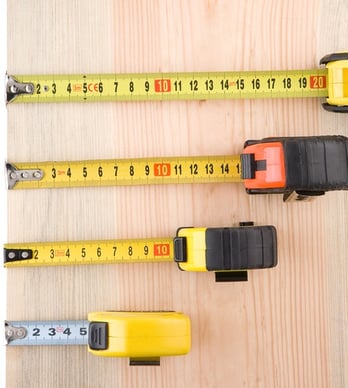 As you may have heard us say before, productivity can be a frustrating concept. The reality is, we all work at our own pace and it's inevitable that some of your employees are simply more productive than others. Fortunately you can improve on how you and your team measure productivity to enhance it across the organization.
As you may have heard us say before, productivity can be a frustrating concept. The reality is, we all work at our own pace and it's inevitable that some of your employees are simply more productive than others. Fortunately you can improve on how you and your team measure productivity to enhance it across the organization.
How to measure productivity and improve it business-wide
1. Establish a baseline
Before you can formulate the results you need to improve employee productivity, you must establish a baseline. A contributor at Chron suggests that you use your "small business's normal or day-to-day business operation output, set an average for the total amount and then divide it by the number of employees."
With a growing market in employee-monitoring software and project-management tools, there's no shortage of ways you can monitor your employees' productivity and increase your company's. Take Workamajig™, for example, a project-management software tool that streamlines everything from accounting responsibilities to traffic management, so you can focus on other areas of growth.
One way you can measure productivity with this tool is to encourage your employees to utilize the "Run a Timer" feature. That way each member of your team can accurately track the start and end times of their tasks to identify any areas of weakness in their project-completion routine. Finally, say you meet twice a week—once on Monday and once on Friday—to check in with your team on projects and company information. Could you shorten or reduce the amount of time you spend in meetings each month? While meetings may be one of the best ways to make decisions as a collective group, sticking to a firm agenda, or moving your communication to a collaboration tool such as Office 365, may increase the output of projects and improve productivity department-wide.
2. Let your results tell the story
According to Nick Friedman in a contribution to allBusiness: "Results are the most important indicator of employee productivity. Try to collect as much information as possible from each client. How did they hear about you? What drove them to buy? Then reverse-engineer that information and figure out which employees were responsible for generating that business, from start to finish." If your employees are going above and beyond to satisfy your customers and the deliverables always meet—or exceed—your expectations, productivity may not be of concern. A decline in performance is a clear indication of employee burnout and a loss in productivity. If you notice that your employees are missing deadlines, or their work becomes static when they once challenged the status quo, you may find it in your best interest to schedule a meeting to discuss the decline in performance.
3. Motivate your employees
At the end of the day, your employees want to be a valued asset to your company. In turn, they will feel more inspired to contribute to growth. This may mean more tasks accomplished on any given day, a commitment to longer hours and more. To encourage your employees, set attainable goals and use the results from the goals accomplished to help your employees grow. And remember, every hardworking employee needs a break from the day-to-day. To keep your employees' performance and momentum up in the office, encourage breaks and vacations. Finally, don't forget to acknowledge accomplishments—no matter how big or small.
4. Measure tasks completed—not the hours spent at the office
While this may sound contradictory to our first statement, every organization operates differently, just as some of your employees are more productive than others. Sure, some of your employees may be first to arrive to the office and last to leave, but that doesn't always mean they are completing more tasks than those who never require overtime. Just ask the staff at Harvard Business Review: "...when managers judge their employees’ work by the time they spend at the office, they impede the development of productive habits. By focusing on hours worked instead of results produced, they let professionals avoid answering the most critical question: 'Am I currently using my time in the best possible way?' As a result, professionals often use their time inefficiently."
What qualifies as an effective method of measurement
Now that you have methods of measurement in place, it's time to implement them. Be transparent with your employees. If you expect them to submit a timesheet at the end of each day, for example, they must be made aware of this change. The same rings true for any information you're capturing on your employee, and why. When you educate your employees on the value of measuring productivity—both for company and individual growth—your employees are likely to feel more welcoming to the changes made.
Don't forget we're all human, and productivity comes and goes throughout the day. That said, don't let your employees dwell when they suffer from a lag on a Monday morning. As long as the lag isn't consistent, your management team should have nothing to worry about. Finally, if your methods uncover information on certain employees struggling with performance, bring it to their attention before it's too late. Chances are if they are made aware of your concerns, they will be more than willing to make changes to improve their performance.







